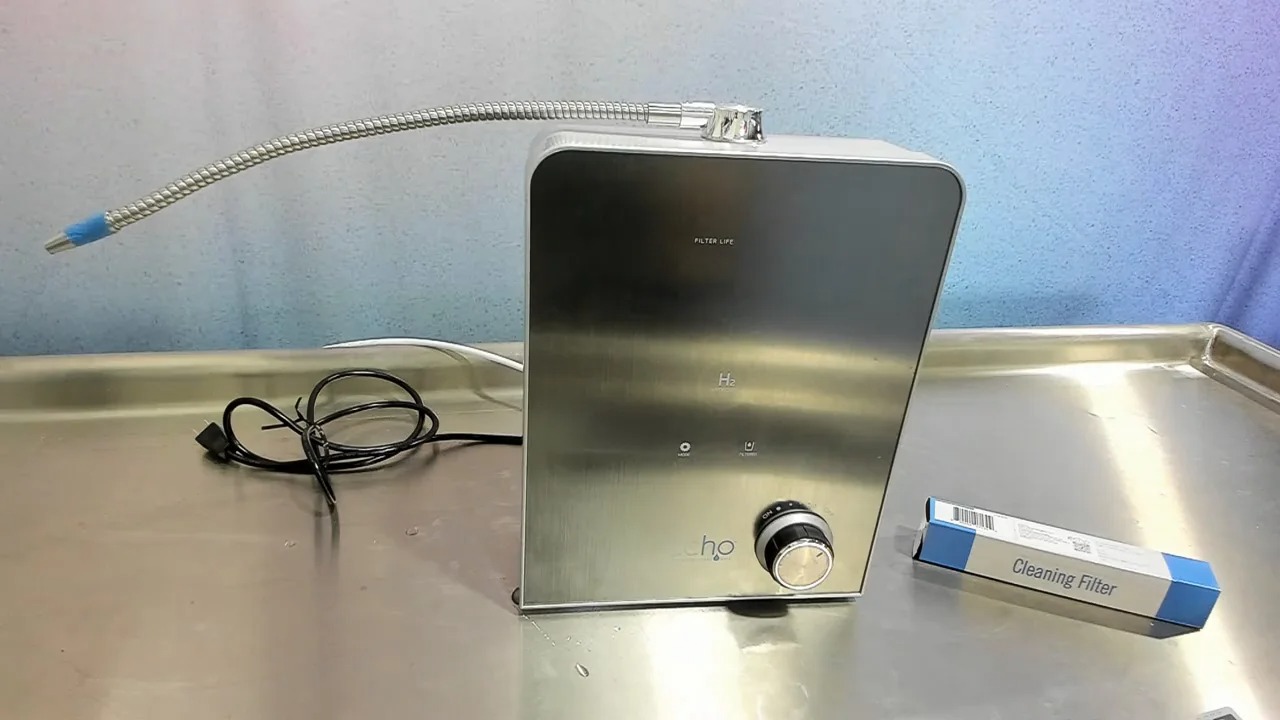
In a rapidly changing digital era, numerous gadgets are being introduced with the age-old promise of making our complex lives simpler. They are developers that save time, reduce stress, and are easy to use in our daily lives. But how many of these devices can match the big talk with the fantastic things that they are capable of? Through extensive trial and research on various gadget categories, we have identified distinct patterns regarding which inventions bring the most benefits versus those that merely add complexity to life. Furthermore, a thorough investigation of the problem sheds light on which new gadgets truly affect our daily routines. Thus, we not only refrain from being deceived by excessive advertising but also reap its numerous benefits. Understanding the virtues and vices of these technological helpers will help in making informed gadget-dwelling choices or bite the bullet on the very device that's creating as many problems as it's solving.
Smart Home Realities
Innovative living technology is a double-edged sword, as it is both a source of great convenience and a source of significant difficulty. Indeed, innovative lighting systems that automatically adjust the lights according to the natural light in the environment can keep the surroundings cosy and save energy. Thermostats are programmed to remember your preferences over time, allowing them to set the house's perfect temperature and, at the same time, reduce your bills. When at a remote location, individuals can always be assured of the security of their home. Such are the primary benefits. However, the benefits that come with these advantages are not without the drawbacks that often accompany them, presenting numerous challenges. Many intelligent household machines are so delicate that the installation process can be frustrating, even for tech-savvy people. Moreover, instead of enjoying the provided services, users remain on edge due to regular software updates that are necessary. The numerous problems associated with the compatibility of different brands and platforms often leave them with little to no solution, resulting in a dull building full of buttons and switches. It is also evident that a user might not be able to work if, at any time, any of the machines ceases to function. For example, if the internet connection fails, a person will face challenges in simple tasks, such as adjusting the thermostat or turning on the lights, which means relying on technology for basic life needs.
Kitchen Gadgets That Are Worth Checking Out
The current kitchen is a world of ultra-useful things, yet at the same time, it is overcrowded with unnecessary gadgets. Practical kitchen gadgets are usually only three: they have multiple features that all perform well, are a natural fit for meal preparation, and are also very easy to clean after use. A multipurpose cooker of excellent quality is a good example of kitchen innovation that can replace many single-task devices, allowing you to save time and space. Smart scales that work with someone during a recipe and deliver exceptionally accurate results are perfect for both individuals new to cooking and baking enthusiasts. Electric cookers with controlled temperatures will ensure your dish is cooked correctly.
Nevertheless, the kitchen is an attraction for one-item devices that claim to be a game-changer in food preparation, although in the end, they often remain untouched. The worst-rated machines are those that are very difficult to assemble or clean, or require their apps to be used all the time. Thus, these gadgets can be blamed for the trouble in the cooking process. The decision to buy a kitchen gadget is based on its practical effectiveness in your day-to-day cooking.
Review of Productivity Technology in the Workplace
Workplace productivity is the target area where we meet a range of advanced working tools alongside those that draw our attention to gadgets that provide superficial benefits. Hardly any of those productivity gadgets do what they are meant to and are free of fancy add-ons. The handy tools in a workspace are those that do not hinder work or require extra actions, but instead introduce an easy and quick way to resolve issues productively. Designed for noise-cancelling headphones, which directly leads to increased work and productivity by creating a quiet atmosphere and eliminating surrounding sounds. Such productivity tools as a smart notebook, which can record handwritten notes in real-time, can effectively bridge the gap between physical and digital workflows, ultimately leading to more efficient workflow management. Consider a portable monitor; once attached, it's now a work desk on the move that allows the continuation of tasks, giving even more efficiency to the remote worker. Still, a vast majority of the tech tools people buy overcomplicate the usual working procedures, and what's more, they often revolve around mundane tasks. Using a notebook replacement app may take longer than writing a simple task down on paper. The devices with constant battery depletion or those that always require internet availability become even more complicated instances in the user's life, who throughout the day deals with numerous minor issues, but now fails to see the wood for the trees. The better way to achieve success with productivity enhancement tools is to have such tools that can seamlessly integrate into existing workflows, without requiring much discussion or even disrupting the critical role within the flow of work.
Health Technology Assessment
Gadgets for health and wellness occupy a somewhat ambiguous area in the realm of innovative technology. Use of such devices can be a virtue if they assist in tracking, analysis, and motivation. For example, alarms that capture and improve sleep patterns can enhance a night's rest. Additionally, pedometers not only give gentle encouragement to walk throughout the day but also constantly remind people to move, which can address the problem of a sedentary existence. Multi-role body weight scales that display beyond weight-related indicators can provide a clearer picture of health than just weight alone. However, several disadvantages may also arise from the use of these devices. The overabundance of health information can lead to distress rather than bring peace of mind. Incorrect numbers, for instance, may create a false alarm about non-existent health problems. Of particular concern is the case where over-reliance on quantitative measurements leads to people becoming entirely out of touch with their body's natural signals. The most beneficial way to approach health technology is to use these devices primarily as informational sources, while still making decisions based on our inner selves.
Cleaning Technology Analysis
The cleaning gadget market comprises several products that broadly represent the extreme of technology, being either really useful or too complicated. Vacuum robots that perform floor cleaning tasks daily without human intervention result in significant time and physical energy savings, particularly for busy families and older individuals who require assistance with household chores. Floors with shiny surfaces can be maintained between washes with easy-to-use smart mops. One such instrument is the automatic cat toilet, which eliminates the unpleasant task of cleaning the cat's litter for pet owners. These gadgets are successful because they indeed complete tasks that are unpleasant for people, require little human supervision, and manage all their functions well. On the contrary, there are cleaning devices that require step-by-step follow-ups, are more cumbersome than the manual ones they replace, and are incapable of removing specific types of stains. It's evident that overwrought versions of minimalist tools are usually the cause of great disappointment, and people understand their point when they say a blunt instrument is the best. What part of the decision-making process is involved in cleaning technology? The one that we have to ask ourselves frequently is whether the product can be used consistently enough so that it pays off in monetary terms and provides sufficient space for storage.
Hidden Costs and Considerations
There are more factors to consider than just the initial cost of purchasing a smart gadget. Aside from the initial investment required, smart devices often have several hidden fees that consumers should carefully consider. The tasks that need to be completed when a smart gadget is initially set up, as well as the time required to maintain it later on, usually take longer than initially expected, not to mention other issues such as repairs or software updates. The mental effort needed to remember to keep one's gadget on hand often outweighs the comfort and accessibility it provides. Today, there is a large number of smart devices that require regular subscription fees to access their full range of functions. This subsequently means that the customer commits himself to cover the period needed financially. Continuously growing technological obsolescence means that products of today are likely to be replaced by the new generation within a couple of years. There is a serious problem of becoming too dependent on technology, which causes you to forget or lose the ability to carry out even basic operations without gadget support in case of failure or power shortage. What comes as a revelation to users is the fact that new gadgets seek to serve various purposes, but the most fulfilling of them all is the commitment in time, money, and peace of mind that they grant the user. The hidden costs mentioned in the passage raise the question of whether purchasing a new gadget will contribute to savings in time, money, and peace of mind.
Conclusion
After analysing the current state of smart gadgets, the verdict on their prospects for feasibility is not a straightforward one. The new smart gadgets can be used as tools for simplifying daily chores, provided you are selective in your choice and follow the implementation plan to the letter. The winners in the use of this technology are those who do not succumb to the bandwagon mentality and the fear of missing out, but instead evaluate their personal needs realistically. Gadgets that bring vital needs to existence through factors such as being problem-specific rather than fantasy-oriented, fitting into regular human operation without force, and providing efficient performance with a minimum of repair and maintenance are genuinely valuable. Moreover, those that do not offer extra convenience, but on the contrary, add to the complexity and cause disillusionment to the user in their use, are the ones to avoid. One should not rush into purchasing the next top-ranked technical device. Plan the operation, and going with the flow is the best policy. Take, for instance, one or two among the high-value items that are within your financial reach as your starter pack. According to Doug Sangster, stovepipe systems within a company may continue to operate and create the illusion that they are profitable, when in reality, they are bankrupt. Most of the time, people are too obsessed and defensive about their wrong purchasing decisions. Hence, one can resort to discarding gadgets that fail to deliver the anticipated benefits, a phenomenon cited as the sunk cost fallacy that has led many to make purchases that make no sense at all. Technology should be a facilitator of life without compromising quality and simplicity. The process of recognising and deciding to engage with devices that can improve one's daily life and avoiding those that bring confusion and uncertainty requires a wise and careful selection by a person.








